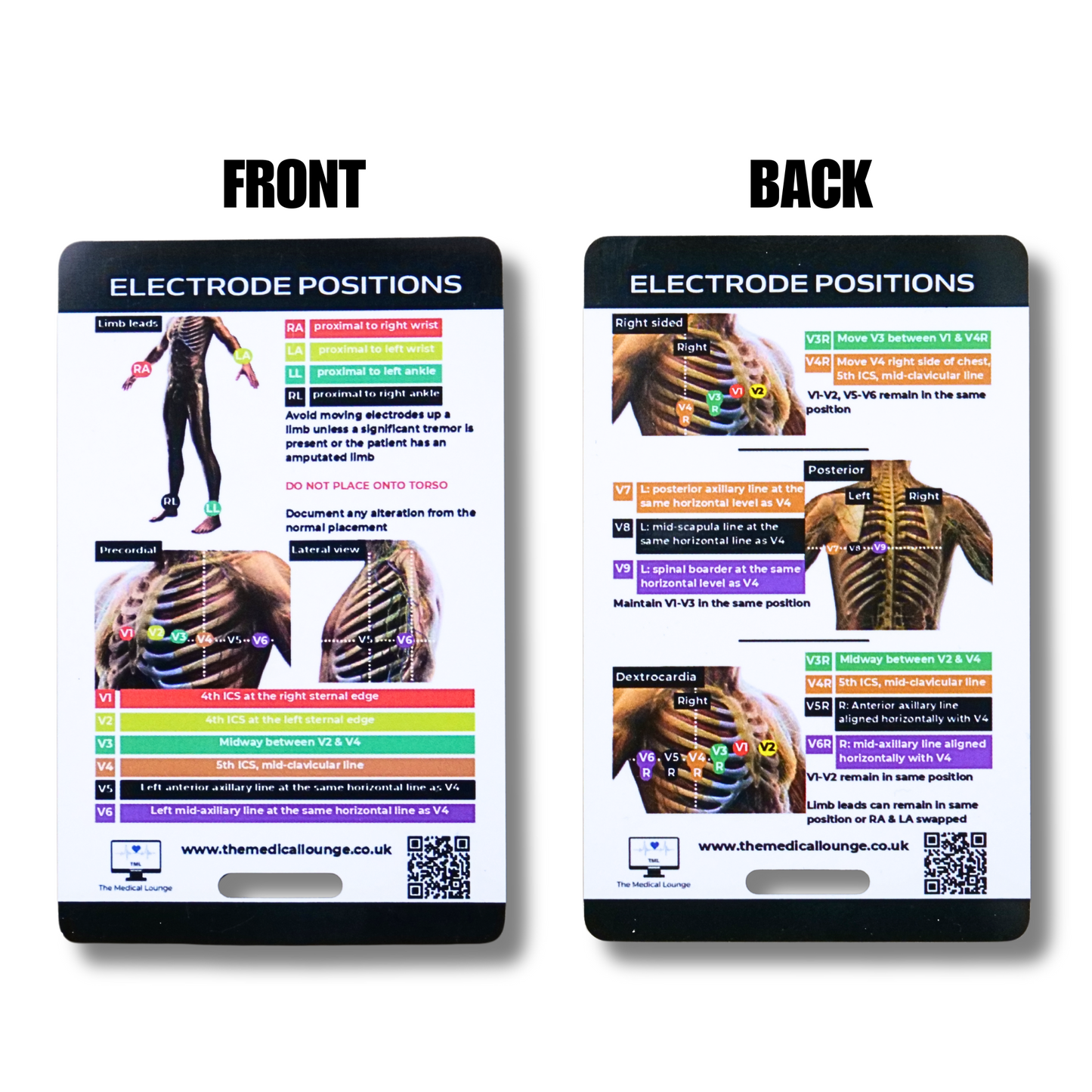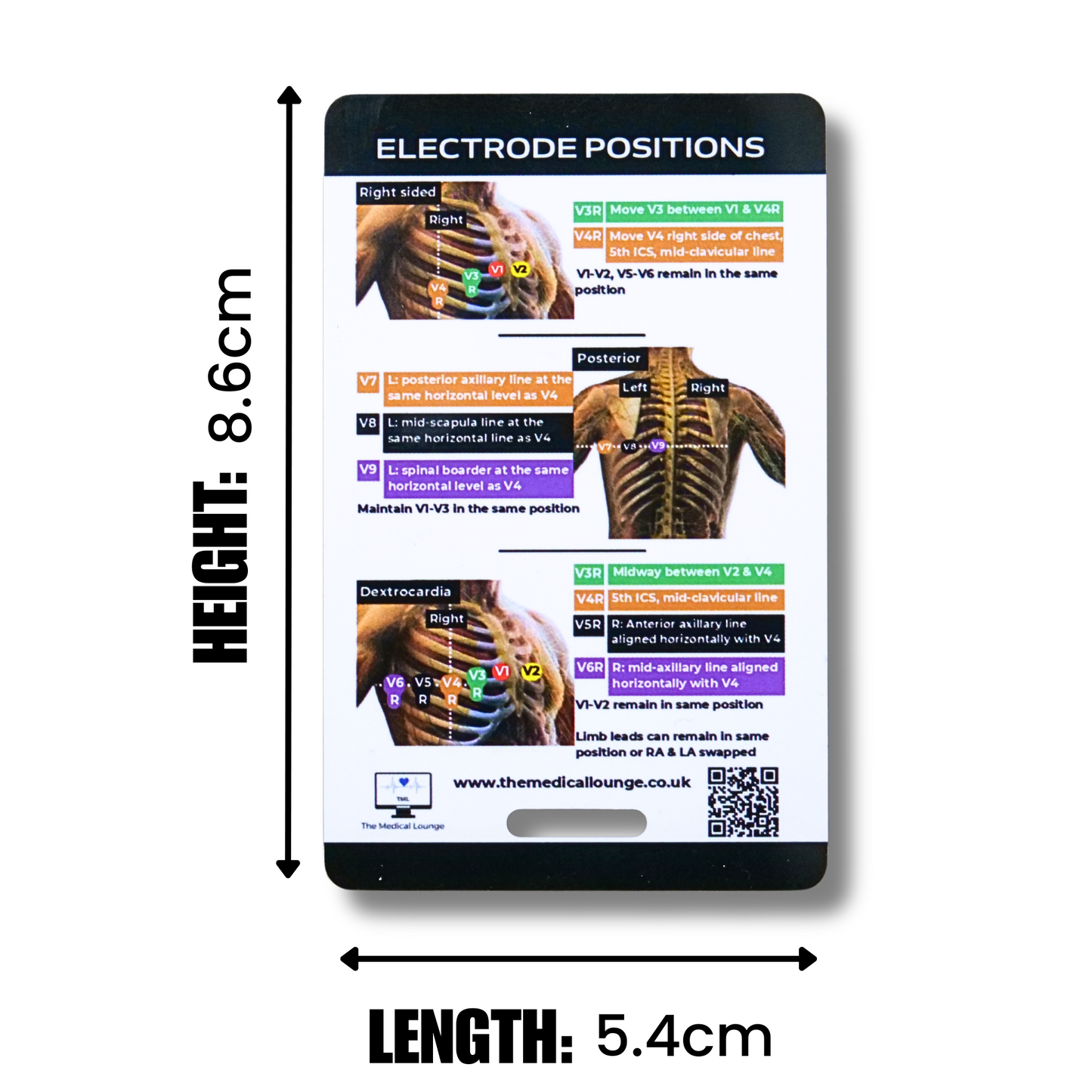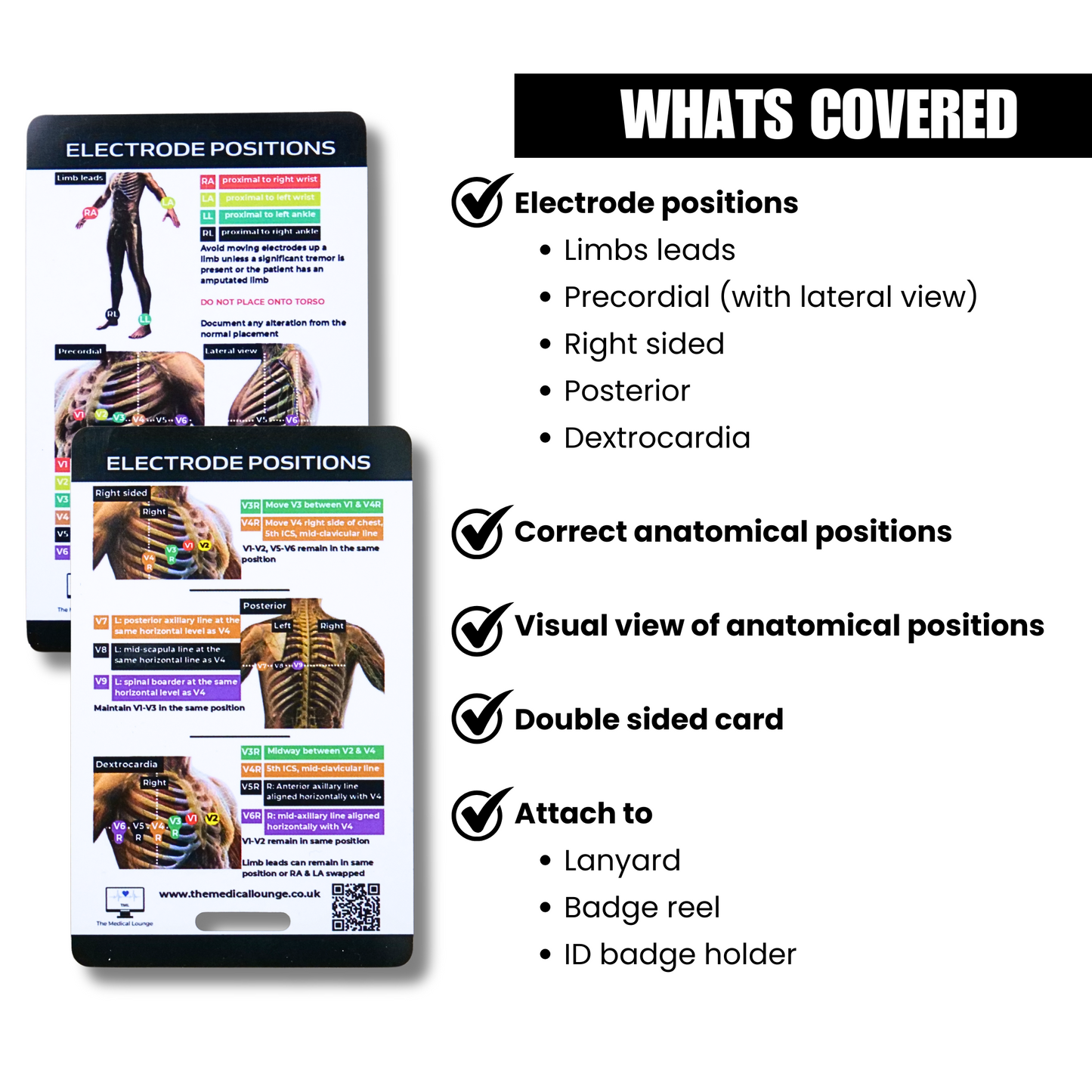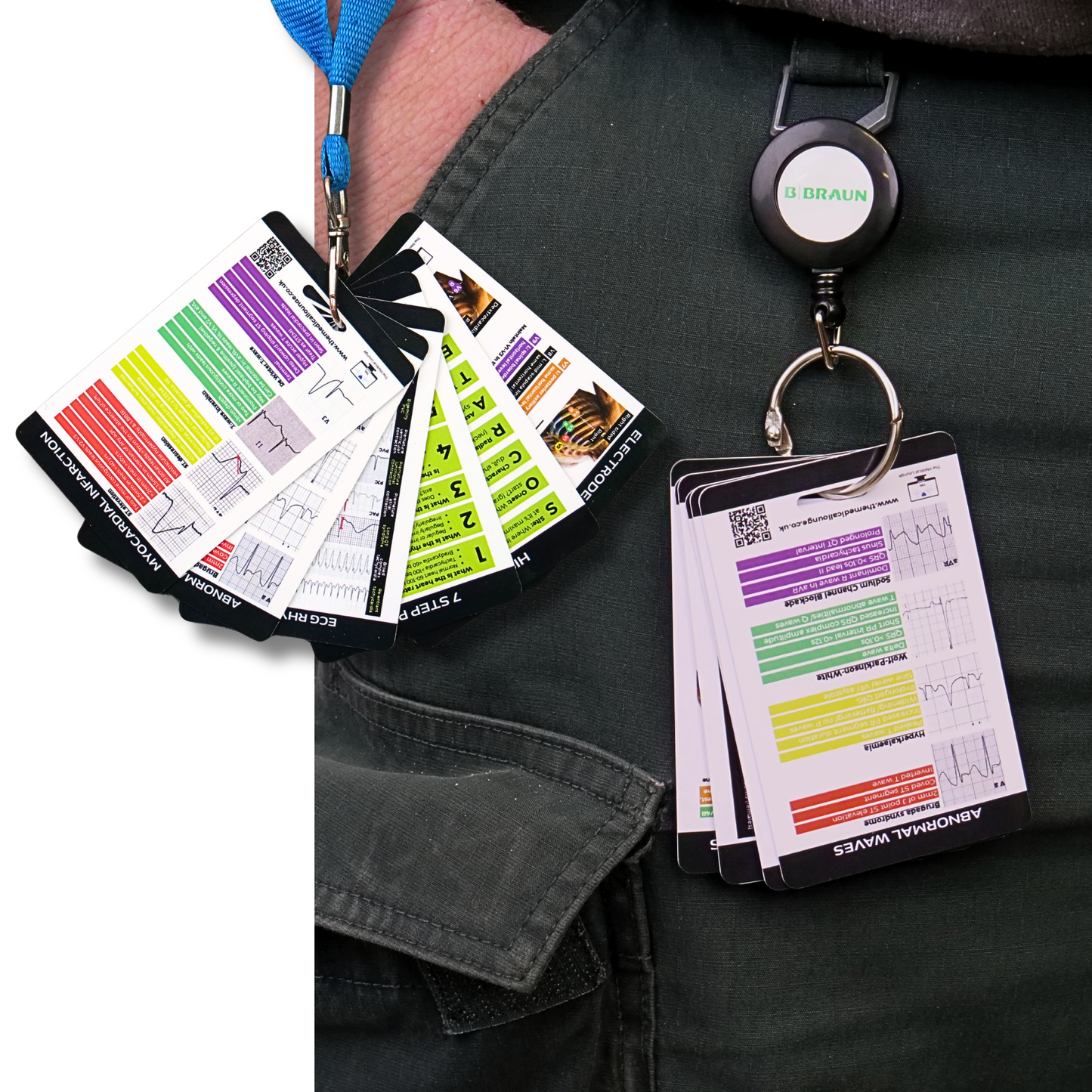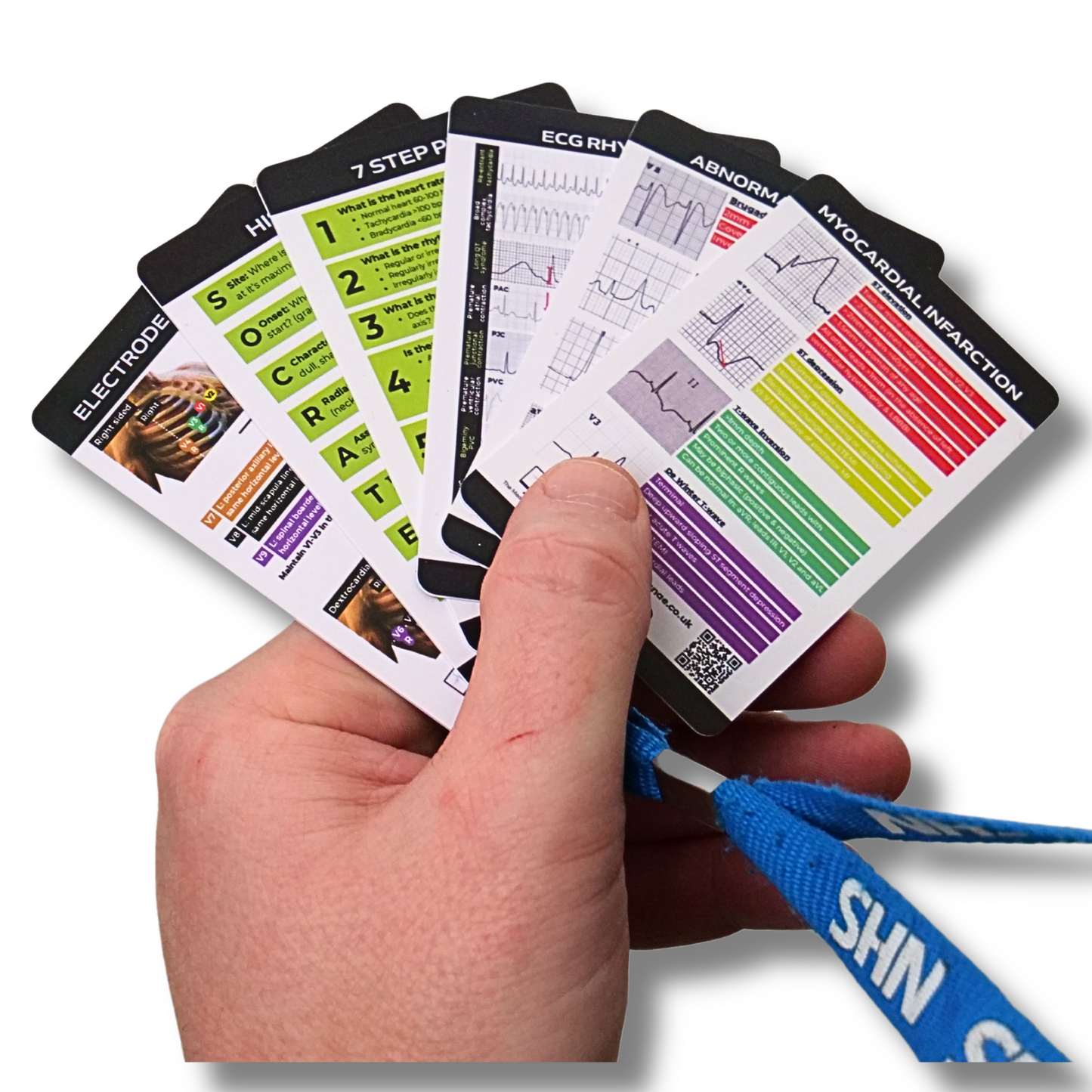ECG Electrode Placement Card | Limb, Chest, Right-Sided and Posterior Leads | Lanyard Reference for Paramedics, Nurses and Students
ECG Electrode Placement Card | Limb, Chest, Right-Sided and Posterior Leads | Lanyard Reference for Paramedics, Nurses and Students
Couldn't load pickup availability
SKU:
ECG Pocket Cards
These reference cards are part of make your own bundle, select either 3, 4, 5 or 6 of any of the reference cards (excluding the predefined bundles)
The more you buy, the more you save.
ECG Electrode Placement Reference Card – Standard, Posterior, Right-Sided & Dextrocardia
Perfect your 12-lead ECG setup with this visual ECG electrode placement guide, designed for paramedics, nurses, students, and emergency clinicians. This compact, lanyard-friendly reference card includes accurate anatomical landmarks and visual diagrams for standard and advanced ECG lead placement.
What’s Covered:
- Limb Leads (RA, LA, RL, LL) – Correct placement for accurate ECG tracing
- Precordial (Chest) Leads (V1–V6) – Clear guidance based on intercostal spaces and anatomical landmarks
- Right-Sided Leads – Ideal for assessing RV infarction
- Posterior Leads – Essential for identifying posterior infarcts
- Dextrocardia Placement – For patients with reversed heart orientation
Each section includes anatomical descriptions + visual diagrams to support confident and consistent electrode application.
Product Features:
- Size: 86mm x 54mm (standard credit card size – fits all ID holders)
- Material: Gloss-finished, waterproof PVC plastic
- Attachment: Features an elongated hole punch – ready for lanyard, badge reel, or clip
- Design: Clinically accurate and easy to reference on shift or during training
Bundle:
- Includes 6 ECG reference cards
- PLUS Transparent ECG ruler
- £2.70 per card
Why You’ll Love It:
- Reinforces correct placement – crucial for diagnostic accuracy
- Helps reduce artefacts and lead misplacement
- Perfect for ECG practice, OSCEs, clinical placements, and on-call reference
- Durable, wipe-clean, and built for clinical environments
From routine ECGs to complex infarct identification, this card helps you get electrode positioning right—every time.
Share
